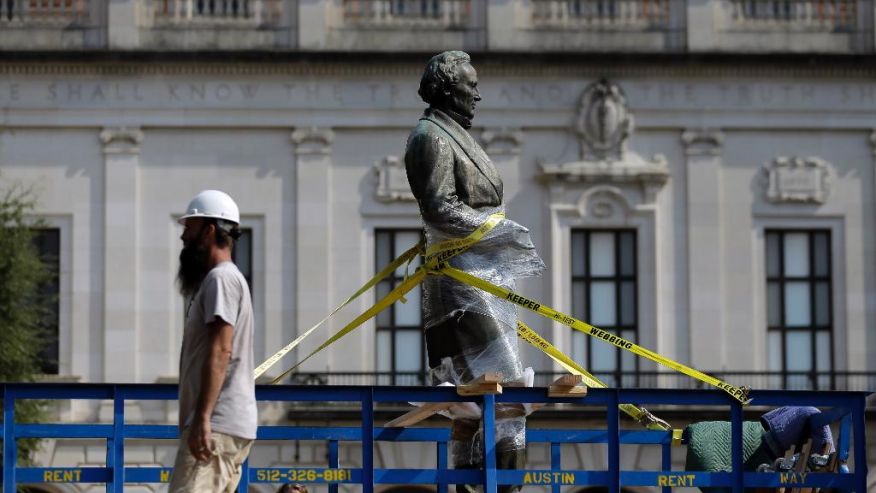Have you ever been planning a lesson, and the resource you’re looking for isn’t there? Maybe it’s a YouTube video you saw that would be perfect, maybe it’s just a simple handout. Either way, a missing resource can be extremely frustrating, especially if you didn’t have time to check the resource before the actual lesson (come on, you know this has happened to you). Now imagine this experience with something more substantial, say a statue. That would be the case if you tried to take your class to see president Woodrow Wilson or president of the Confederate States of America, Jefferson Davis, both of which have been removed. Today’s post gets more into how the Augmented Reality Research Priority Group aims to solve this teaching problem with digital overlays.
In my last post, I was continuing my exploration into the Confederate statues that line UT’s South Mall. Whereas my first post in this series discussed the prominent placement of the Littlefield Fountain, which has, at its center, a statue that memorializes North and South unity post-WWII, my second post, moves past the fountain and into the statues that line the South Mall themselves. More specifically, in the latter post, which discusses Lisa Falkenberg’s article “History Lessons Are Important, but So Is Rectifying Mistakes,” I raise the question of whether the removal of these Confederate statues, such as Jefferson Davis, will affect a sense of UT’s racist heritage.

As I mentioned also in my second post, the project for this semester’s augmented reality research priority partly aims to supply visitors to UT’s campus with the experience of “seeing” the missing Confederate statues. To that end, once again, today’s post
focuses on digital overlays, which broadly defined according to Intel, a company that is known for its creation of computer processors, are “hard . . . technologies that have the potential to create interfaces that can exist anywhere.” (Intel’s iQ medium, a series of blogs that covers everything from fantasy football to female dating simulations, also has an informative and brief write-up of digital overlays.)

How can digital overlays, then, help us enrich the experiences of visitors to UT’s South Lawn. The most obvious answer to this question is that the ability for the internet to be used as a teaching tool is already widely embraced. A Pew study published in 2014 found that “87% of online adults say the internet and cell phones have improved their ability to learn new things.” (The study defines an adult as anyone 18 or older. Thanks to another iQ post for directing me to the study.) This statistic has obvious implications for using AR as a teaching tool. Foremost, beyond just visitors, who presumably have at least smartphones, AR can also be used in the classroom, where students are already utilizing smart devices to record lectures and take notes.
More specific than this general statistic, though, scholarship has also been fascinated with the use of technology in the classroom. For example, “Using Augmented-Reality-Based Mobile Learning Material in EFL English Composition: An Exploratory Case Study,” an article published in the British Journal of Educational Technology in 2013, argues that augmented reality is better than written methods of teaching English-as-a-second-language because augmented reality circumvents the knowledge of English writing that students must know before they can actually begin learning English.
Ultimately, the capacity to go outside also provides a varied classroom experience and an opportunity to engage with not only the physical space of campus but also a national dialogue, which will develop students’ senses of their citizenship, a core part of the University’s mission.
Featured image: Courtesy of Fox News.





